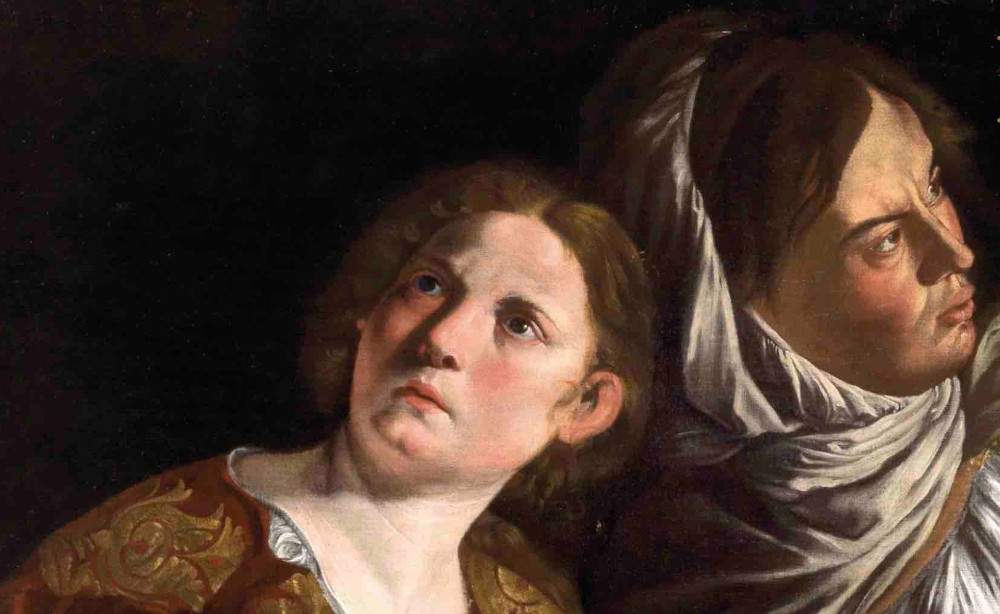From Oct. 27, 2022, to Jan. 8, 2023, the Fondazione Cassa di Risparmio di Terni e Narni will present the exhibition Drama and Passion - from Caravaggio to Artemisia Gentileschi, curated by Pierluigi Carofano, in collaboration with Tamara Cini, at its Terni headquarters. The exhibition will take place in eight rooms on the ground floor of Palazzo Montani Leone, set up for the occasion, and thanks to the Fondazione Carit, two works by Caravaggio, namely The Sorrowful Magdalene and The Crucifixion of St. Andrew, will be on display alongside Artemisia Gentileschi’s Judith with the Head of Holofernes.
"The exhibition is an extraordinary journey through seventeenth-century painting. In the rooms of Palazzo Montani Leoni, visitors can admire paintings by such supreme masters as Caravaggio, Bartolomeo Manfredi, Orazio and Artemisia Gentileschi, and Mattia Preti,“ the curator says. ”The itinerary winds its way through eight thematic rooms that see the affirmation of Caravaggesque naturalist painting until the confrontation with the Emilian classicism of Guido Reni and Guercino, the clash with Caravaggio’s enemies such as Baglione Salini, and the triumph of Baroque painting with Bernardo Strozzi and Mattia Preti. The tour begins with the extraordinary Portrait of a Lady from the Pinacoteca Capitolina in Rome and ends with Mattia Preti’s Penitent Magdalene from the Fondazione Carit. In addition to presenting an absolute unseen work by Artemisia Gentileschi, Judith with the Head of Holofernes, the real star of the exhibition is Caravaggio, with no less than two works that are difficult for the general public to see. The first is the Maddalena addolorata which, thanks to a document recently unearthed at the State Archives in Rome, is to be considered the model for the figure of Magdalene in the Louvre’s Death of the Virgin. The other is the Crucifixion of St. Andrew, shown in full for the first time in Italy except for a fleeting appearance in Syracuse in the Covid period."
“This painting depicts the Crucifixion of St. Andrew the Apostle, accused of the conversion to Christianity of the wife of Aegeas, proconsul of Patras,” Carofano continues. "The saint is caught in the instant he expires. Two long days of torture in which he bloodless repeats his Creed with great force, to the point that the people of Patras ask the proconsul to release him. But Andrew wants to die like Christ, and so it is that a divine force paralyzes the hands and arms of those who try to untie the knots that hold him to the cross. The figure of the saint, the centerpiece of the painting, is minutely described. Particularly well depicted is the anatomy of the veins that makes the suffering come alive. The half-closed eyes, a tear on the right cheek framed by a dazzling light testify to the encounter with the divine before the last breath. One could read in this depiction the spiritual conversion of Caravaggio, who, beginning with the Resurrection of Lazarus in Messina, completes a path of inner redemption that shines through in his canvases, almost veiled in a mystical aura. Once again Merisi draws on models from the reality in which he lives, capturing its crudest details. Note the commoner at the foot of the cross, depicted with the goiter typical of the thyroid disease prevalent among the poor. Caravaggio’s is a cinematic approach, capturing the moment in its becoming. According to records there are two versions of the Crucifixion of St. Andrew painted by Caravaggio: the one exhibited here whose first owner was the painter Louis Finson, and the one brought to Spain by the Count of Benavente at the end of his Neapolitan viceroyalty (1610), as recorded by Bellori (1672), which is now preserved at the Cleveland Museum."
"With Drama and Passion - from Caravaggio to Artemisia Gentileschi, the Foundation intends to celebrate the birth and development of Caravaggism from Caravaggio’s formative years, to the full flowering of his pictorial art, to the Baroque culture of Mattia Preti," says Luigi Carlini, president of the Carit Foundation. "Thirty-three works from all over Italy and the United Kingdom, some of which are unknown to the general public, have been loaned by leading Italian museums, sister banking foundations, local authorities and private individuals, whom the Fondazione Carit sincerely thanks for their kind cooperation and trust. Among the works on display, the Foundation is proud to present for the first time two of the latest acquisitions for its Art Collection: Artemisia Gentileschi’s canvas depicting Judith and the Handmaid with the Head of Holofernes and Mattia Preti’s Penitent Magdalene. Two previously unpublished works, studied and documented in this catalog by esteemed art historians and critics, which have returned, after a long period, to an institutional collection or, in the case of Artemisia Gentileschi, have returned to Italy from Vienna. The Foundation, in fact, as part of its activity for the protection of historical and artistic heritage, intervenes with the purchase, recovery and enhancement of works that would otherwise be dispersed and removed from Italian territory. To this action it often associates a scientific contribution, through the realization of an exhibition review and a valuable publication."
The exhibition, with free admission, will be open to visitors on Tuesdays and Wednesdays from 3:30 to 7:30 p.m.; Thursdays, Fridays, Saturdays and Sundays from 9 a.m. to 1 p.m. and 3:30 to 7:30 p.m.
 |
| In Terni, Carit Foundation brings Caravaggio and Artemisia Gentileschi to exhibition |
Warning: the translation into English of the original Italian article was created using automatic tools. We undertake to review all articles, but we do not guarantee the total absence of inaccuracies in the translation due to the program. You can find the original by clicking on the ITA button. If you find any mistake,please contact us.